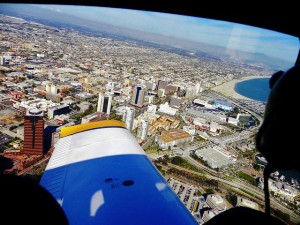 The humble cubicle is many things today: A symbol of the workplace, a place where many Americans transact their working hours, and the butt of jokes and parody. But believe it or not, it was invented in 1967 as an alternative to rigid, privacy-free workplace designs of the pasts, enormous seas of desks with little privacy.
The humble cubicle is many things today: A symbol of the workplace, a place where many Americans transact their working hours, and the butt of jokes and parody. But believe it or not, it was invented in 1967 as an alternative to rigid, privacy-free workplace designs of the pasts, enormous seas of desks with little privacy.
But like any 50-year-old, the cubicle has had to change with the times. Take, for example, the city of Long Beach, CA, home of some of our best customers. Over time, the city has diversified from just the aircraft manufacturing industry it was famous for to health care, electronics distribution, shipping and logistics, and other data and analysis intensive industries. As companies like these have grown, they haven’t just added workers on an assembly line; they’ve also added designers, analysts, and others at desks. And the cubicles they buy need to change with those demands, in five very important ways.
#5) More Outlets
When the cubicle was invented in 1967, most paperwork was done by hand. Now, your average employee will be working on a computer all day every workday, whether they’re working with seniors at Molina Health Care or figuring out what car parts need to be shipped out at TABC. Coworkers may arrive with laptops. Employees may need to charge their cell phones or tablets. Outfit older cubicles with more power wiring and outlets: They’ll need the space.

#4) Data-Friendly Desk Space
Whether you’ve got a laptop, a client server, or a desktop, one thing’s for sure: you’ve got a lot of wires going out of your computers. Upgrade the desk space in cubicles to be data-friendly. Drill holes to string ethernet cables to, or provide anchoring points to boost WiFi signal if necessary.
#3) Clutter Reduction
A messy desk is a messy mind. You’ll hear managers from Polar to Pioneer say that to employees. While many of us have simply made the messy desktop a digital problem, a lot of us still have printed matter to deal with. There’s far less need for file space now that there was in 1967, but you still may have, for example, a projector, or a collection of cables, or a few laptops living in a cubicle now. Make sure there’s room to put it all away.

#2) Ergonomics
Increasingly, it’s becoming clear that sitting at a desk is not necessarily best for your health. Standing desks are becoming more and more popular, and cubicles will need to be able to adjust accordingly.
Even if your employees prefer to sit down, though, they’ll still need ergonomic features such as keyboard holders. Look for more subtle touches as well: For example, modern cubicles will lower the wall a foot or two near the entrance so that someone at the desk can easily swivel around and look at a person nearby. It seems simple, but if two people are having a brief discussion, it makes everyone more comfortable.
#1) Personalization Options
If there’s one thing the cubicle has been bashed for, again and again, it’s for propagating conformity. While a workplace isn’t necessarily an art class, your workers do need ways to express their personalities in a positive way. Make sure there’s room for nameplates, places to hang family photos, and a little space to put up the occasional knickknack or store some more comfortable shoes for the end of the day. Being yourself is important, whether you live in Long Beach… or anywhere else.





